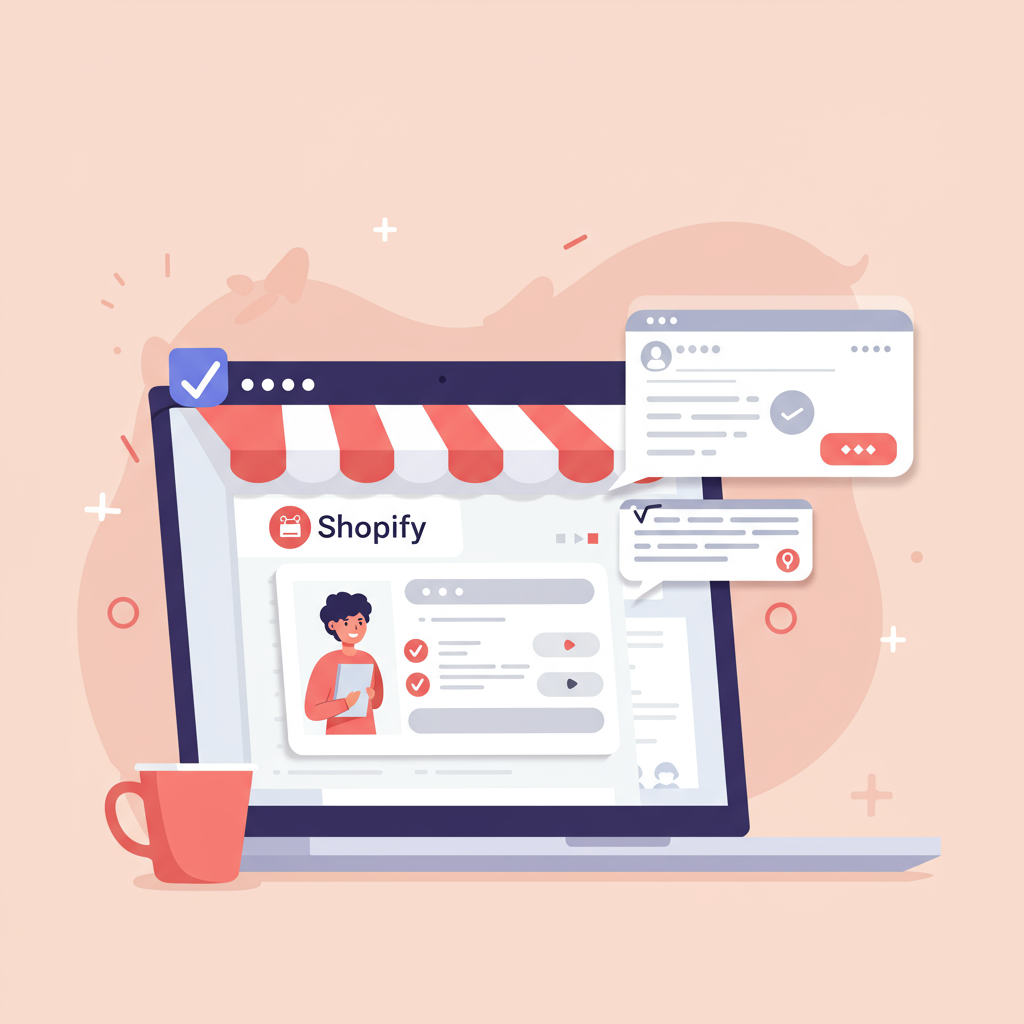Unlock Real-Time Customer Engagement and Drive Conversions with Seamless Support
Hey there, fellow Shopify merchants! I’m here today to share one of my absolute favorite strategies for boosting customer satisfaction and, more importantly, your sales: implementing live chat support on your online store.
In today’s fast-paced e-commerce world, customers expect instant gratification. They have questions, and they want answers *now*.
Gone are the days when email support alone was sufficient. While still vital, it often leaves customers waiting, sometimes for hours, which can lead to frustration and, ultimately, abandoned carts.
That’s where live chat comes in. It’s a powerful tool that allows you to connect with your customers in real-time, right when they need you most.
Think of it as having a friendly sales assistant available 24/7 (or during your operating hours) to guide shoppers through their journey.
From my own experience, the benefits of live chat are undeniable. First, it significantly increases conversion rates. When a customer can get an immediate answer to a product query, they’re far more likely to complete their purchase.
Secondly, it drastically improves customer satisfaction. Providing quick, efficient support builds trust and loyalty, turning one-time buyers into repeat customers.
Third, live chat helps reduce cart abandonment. Often, a customer might be just one question away from checking out. A quick chat can resolve that hesitation instantly.
It also offers a competitive advantage. Many smaller stores still rely solely on email, so offering live chat sets you apart and positions your brand as customer-centric.
So, how do you go about setting up this game-changing feature on your Shopify store? Let’s dive in.
The first step is choosing the right live chat application. The Shopify App Store is your best friend here, offering a plethora of options, each with its unique features and pricing models.
When evaluating apps, I always look for a few key features. Seamless integration with Shopify is paramount, ensuring the chat widget looks native and functions smoothly.
Customization options are also crucial. You’ll want to be able to match the chat widget’s appearance to your brand’s colors and style.
Automation features, like chatbots for answering frequently asked questions or routing inquiries, can be incredibly helpful, especially for smaller teams.
Analytics and reporting are vital for understanding chat performance and identifying common customer pain points.
Don’t forget mobile compatibility! A significant portion of your customers will likely be browsing on their phones, so the chat experience must be flawless on all devices.
Popular choices include Tidio, Gorgias, LiveChat, and even Shopify’s own built-in solution, Shopify Inbox. Each has its pros and cons, so take your time to research and read reviews.
Once you’ve selected your preferred app, the setup process is generally straightforward. You’ll typically install it directly from the Shopify App Store.
After installation, you’ll configure the basic settings. This usually involves setting up your welcome message, defining your operating hours, and customizing the chat widget’s appearance.
I always recommend setting up a clear welcome message that lets customers know your availability and what kind of support they can expect.
Next, you’ll need to add your support agents. This involves inviting team members who will be responsible for answering chat inquiries.
Before going live, it’s absolutely essential to test everything thoroughly. Send yourself a few test messages from different pages on your store to ensure the chat widget appears correctly and messages are received promptly.
Now, let’s talk about some advanced features and best practices that can elevate your live chat game. Proactive chat, where the widget pops up automatically after a certain time or on specific pages, can be very effective.
Canned responses are a lifesaver for common questions. Prepare pre-written answers for FAQs to ensure quick and consistent replies.
Utilizing pre-chat forms to collect customer names and email addresses before the chat begins can help you personalize the interaction and follow up if needed.
What do you think about this article so far? I’d love to hear your thoughts on how live chat has impacted your business, or if you’re considering implementing it!
Don’t forget to set up offline messages. If a customer tries to chat outside your operating hours, ensure they can leave a message that gets converted into an email ticket.
Integrating your live chat with other tools, like your CRM or email marketing platform, can create a more unified customer experience.
Training your agents is paramount. They should be knowledgeable about your products, empathetic, and skilled at quick, clear communication.
Regularly monitor your live chat performance using the app’s analytics. Look at response times, chat volume, and customer satisfaction ratings to identify areas for improvement.
Remember to optimize for mobile. Ensure the chat widget doesn’t obstruct content on smaller screens and is easy to use on touch devices.
A quick note on Shopify Inbox: it’s Shopify’s free, built-in chat solution. It’s great for basic needs and integrates seamlessly with your Shopify admin, making it a good starting point for many merchants.
While it might not have all the advanced features of paid apps, its simplicity and direct integration make it a strong contender, especially if you’re just dipping your toes into live chat.
In conclusion, setting up live chat support on your Shopify store isn’t just a nice-to-have; it’s a necessity in today’s competitive e-commerce landscape.
It’s an investment that pays dividends in increased conversions, happier customers, and a stronger brand reputation.
So, take the leap, explore the options, and empower your customers with the instant support they deserve. You’ll be amazed at the positive impact it has on your business!






